In this post I’ll give some indication of the story and progression of the game although I’m not going to cover everything in detail. My overall thoughts are at the end.
One thing I forgot to mention about the gameplay in the first post is that every stage has a 50 turn limit. This is largely meaningless; I think the longest battle I had was around 17 turns.
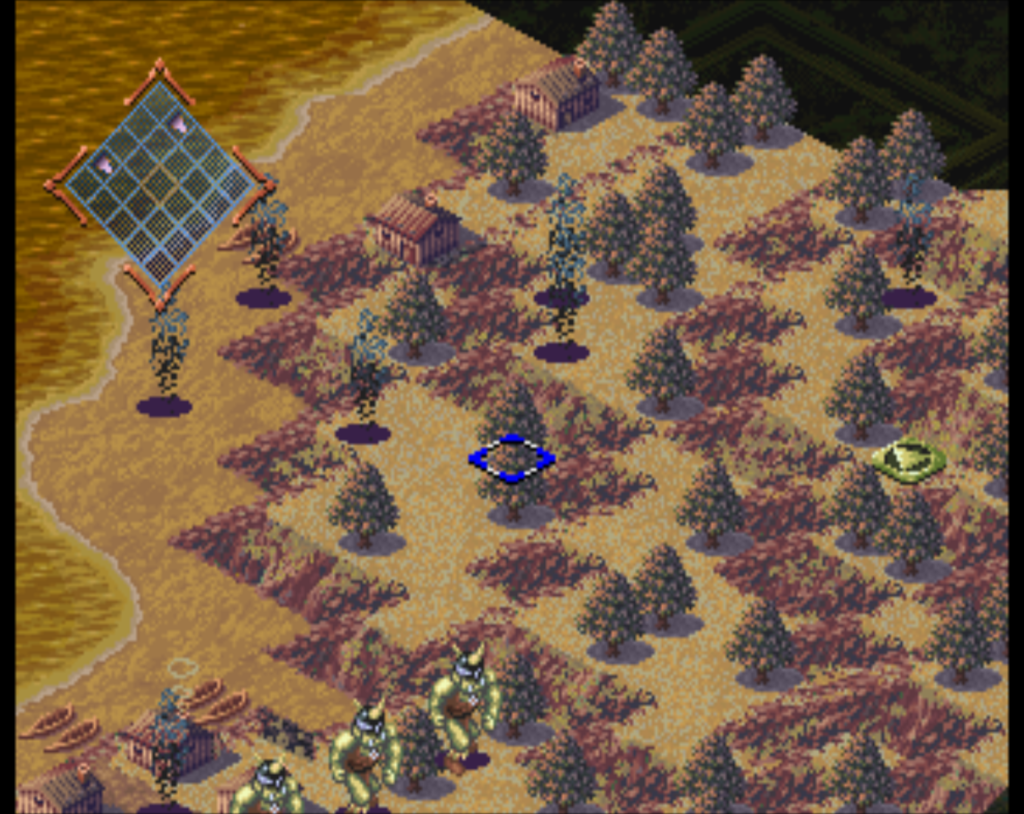
First of all, there’s a rather large unbalance in the number of battles per chapter. There are ten chapters in the game and 33-34 battles, but 19 of those battles are in chapters 8 and 10, and two chapters have no battles. This isn’t necessarily a problem, but it does make me wonder if this is another place in the game that points to the original plan being much wider in scope than how they actually were able to implement it.
The first five chapters are basically following the Emperor’s orders as he sends Mais forces to various places in the land to assist with military operations. First, we deal with Bofon forces headed by goblins. They tend to be pretty easy because they only have 1 AP, meaning that they cannot move and attack in the same turn — so as long as you keep out of their range you can deal with them easily.
The first chapter also has another one of the 4 generals, Evil Shade:
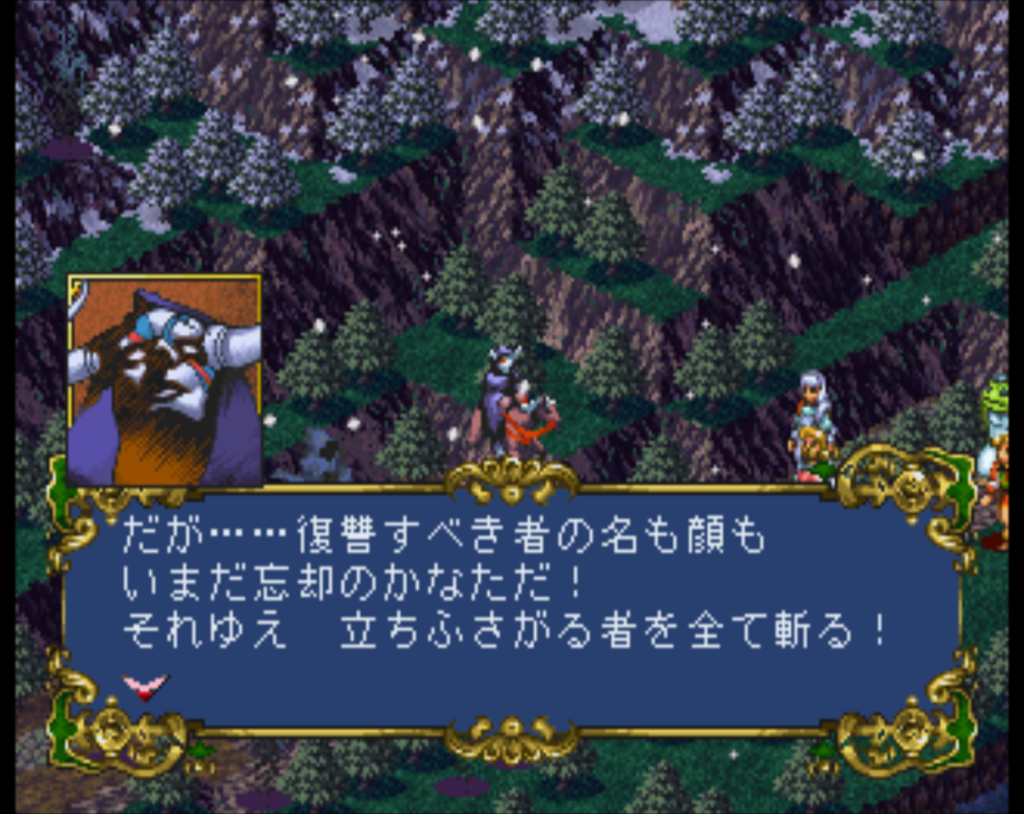
The bosses often are not all that much more difficult than the other enemies.
The second chapter involves Ridis, who is another one of the Bofon 4 generals. She does something to invade Alexis (the duke)’s dreams, and we have to stop him from reaching a gate where he thinks his mother is waiting.
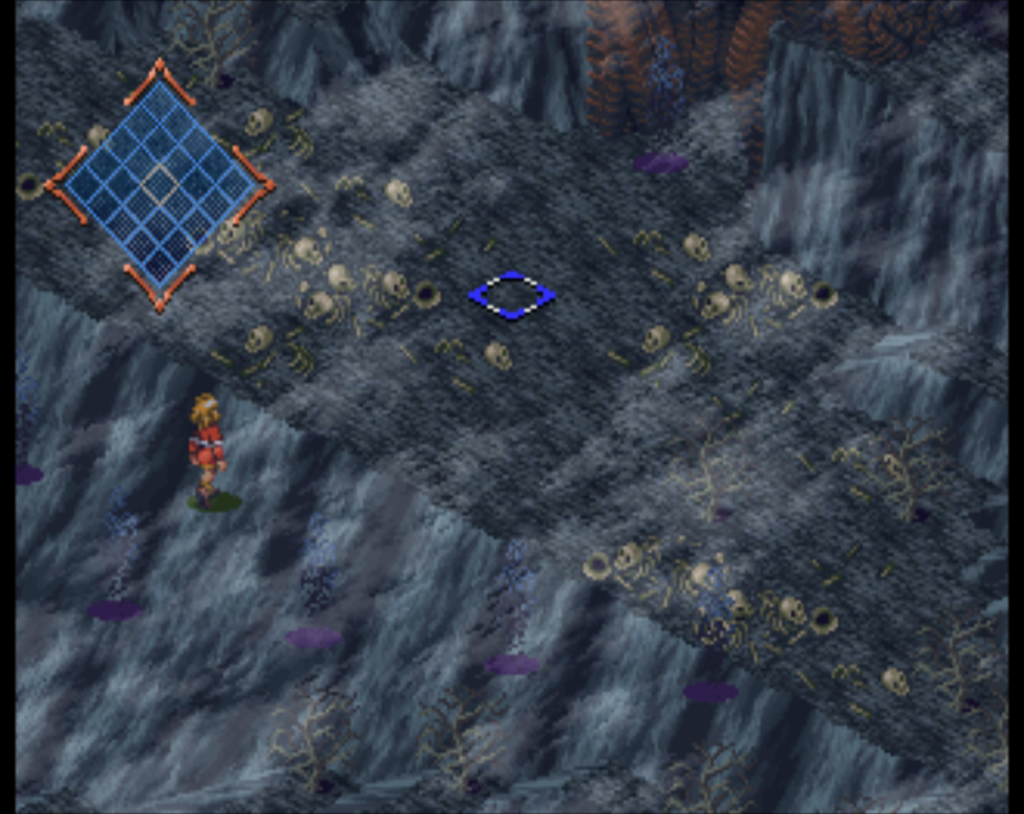
The third chapter gives you the two best units in the game, the witch girls Coco and Jean:
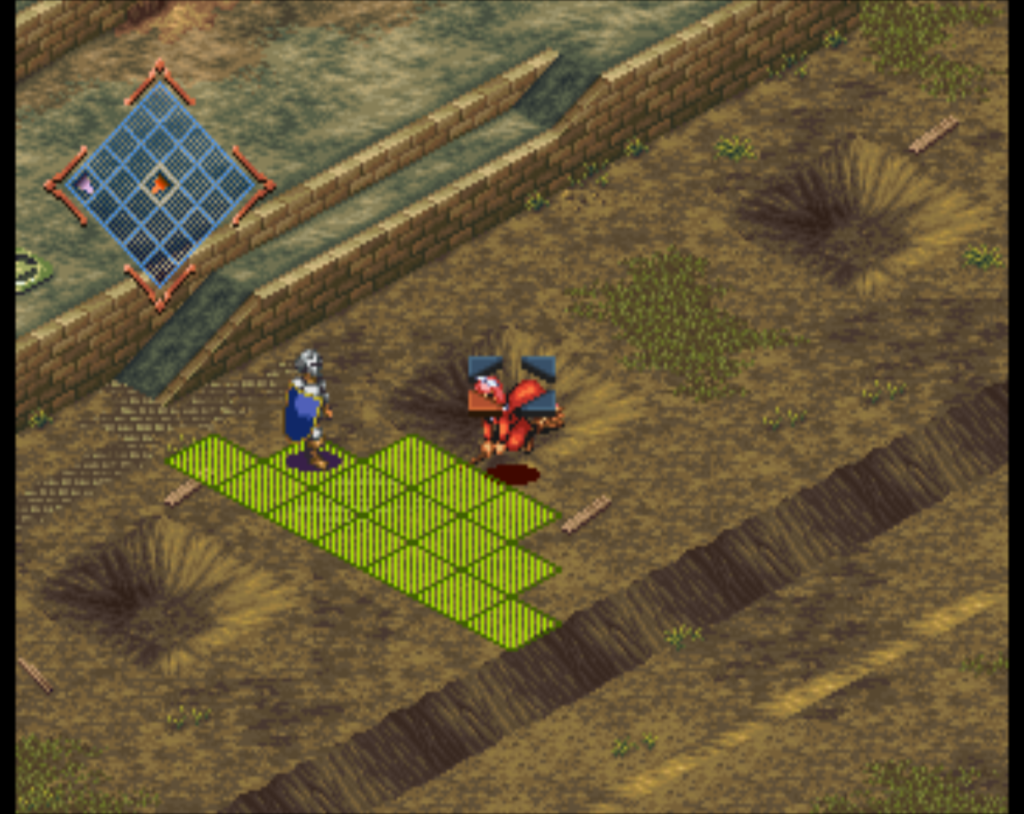
They fly and can use magic. Magic is very powerful in the game and because they can fly, they can ignore height and pass obstacles. Once you have the two of them, you can beat many of the game’s stages in 2 or 3 turns, often without attacking any other enemies besides the boss. I pretty much did this whenever I could.
However, this third stage battle was the hardest one in the game:
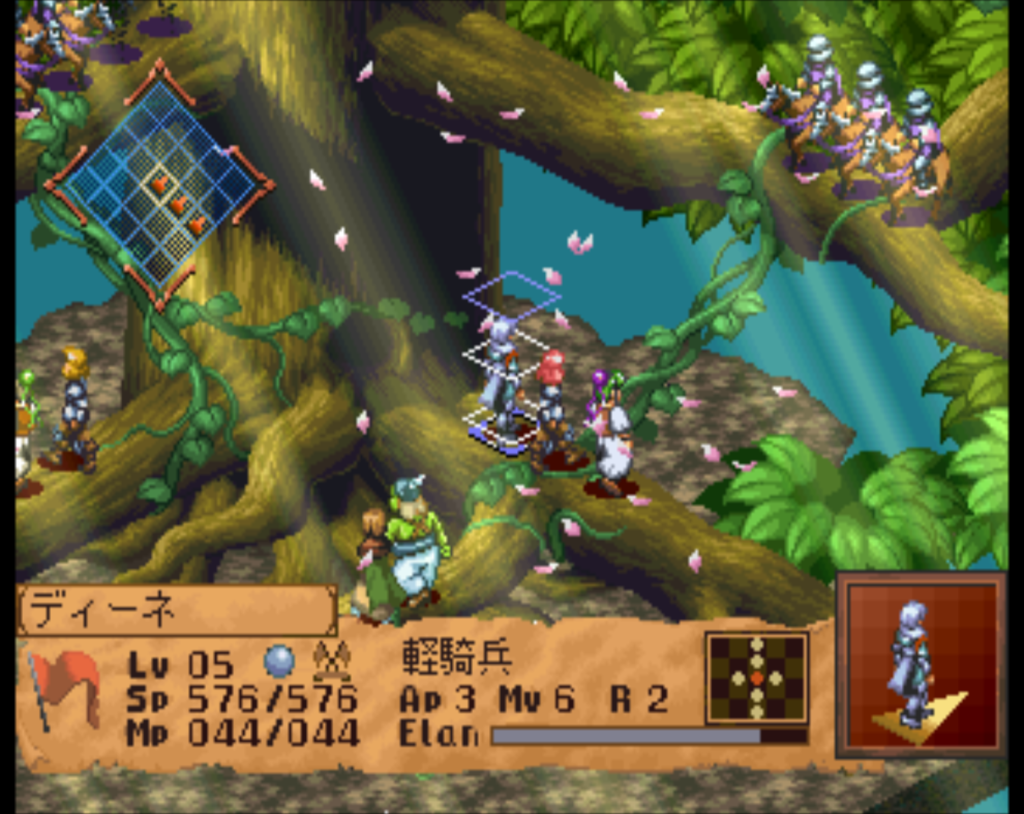
Height has a big effect on combat effectiveness in this game, and most of the enemies are archers. I died a number of times but finally I worked out a method to ignore the units on the right and focus on the left side where the boss was (this is pre-witches so we can’t just go kill him). Once I had enough of the grunt units cleared out I was able to rush the boss and get him.
Chapter 4 involves a rebellion in Huron province.
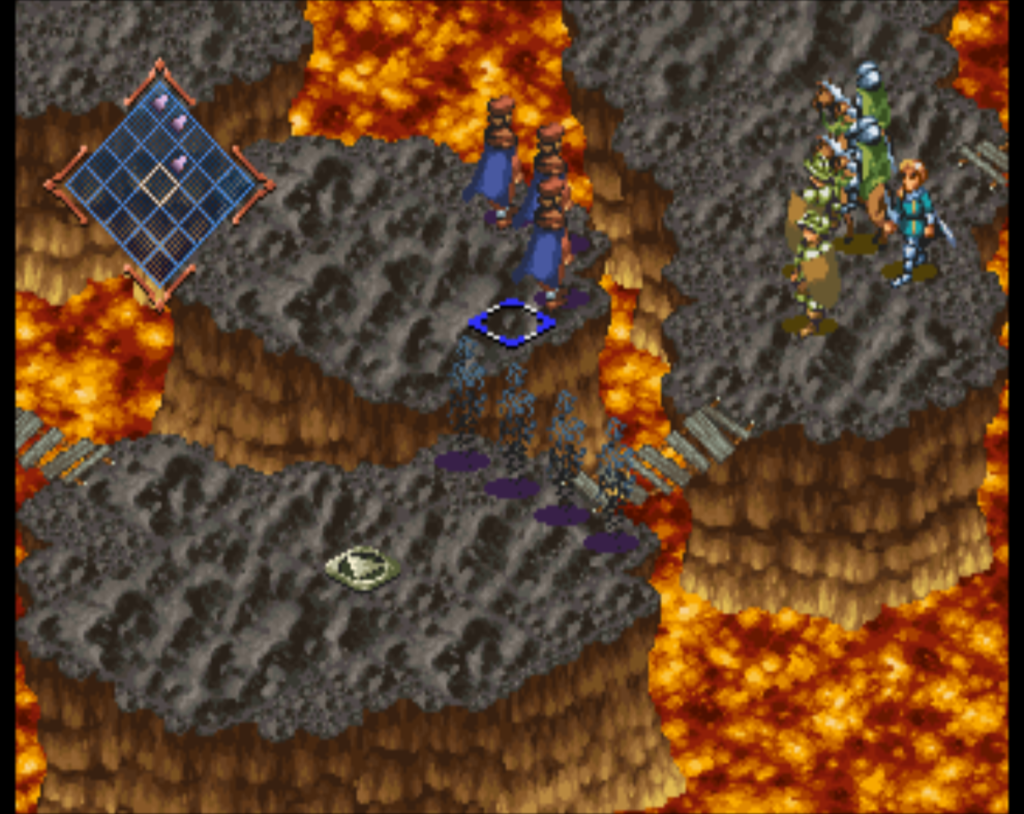
The leader of the rebellion tells us that the “children of men” stole the King’s crows of flowers, and now he will come back in great anger and usher in a new age of peace — this has already begun as “that person”, who sleeps in Bofon, is awakening. We’ve been hearing from other places things about how people stole the “names” of the gods, using them to create human society, which also weakened the gods since they had lost their names.
Chapter 5 is another place where we respond to the Emperor’s request to fight, and also can find a research area to revive characters (or really create clones of them). Chapter 6 we have to put down another rebellion, this time started by a peasant girl Monica who saw prophetic dreams.
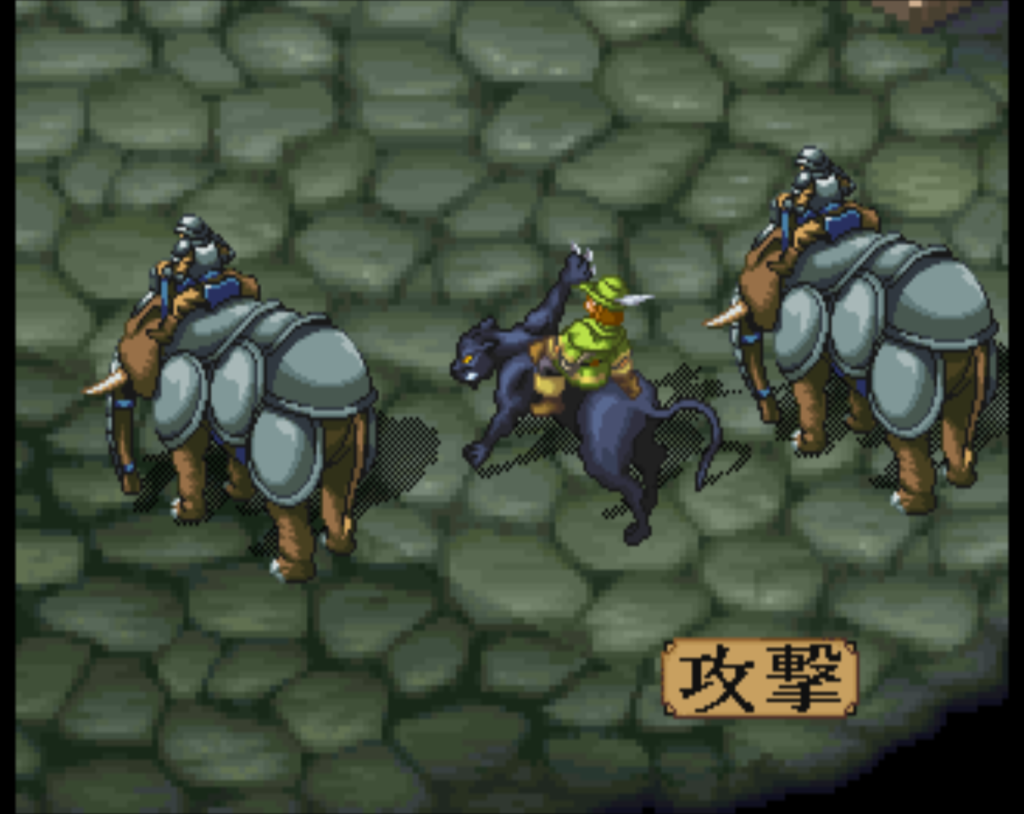
After Monica is beaten, one of her followers tries to kill Dine, but fails — Dine lets her go. Chapter 7 lets you visit the spirit realm if you have any dead units and can bring them back to life (I didn’t have anyone dead at this point so this got skipped).
Up to now there have only been 15 battles — chapter 9 has no battles so chapters 8 and 10 have 19 battles. I’m not sure why there’s this big unbalance.
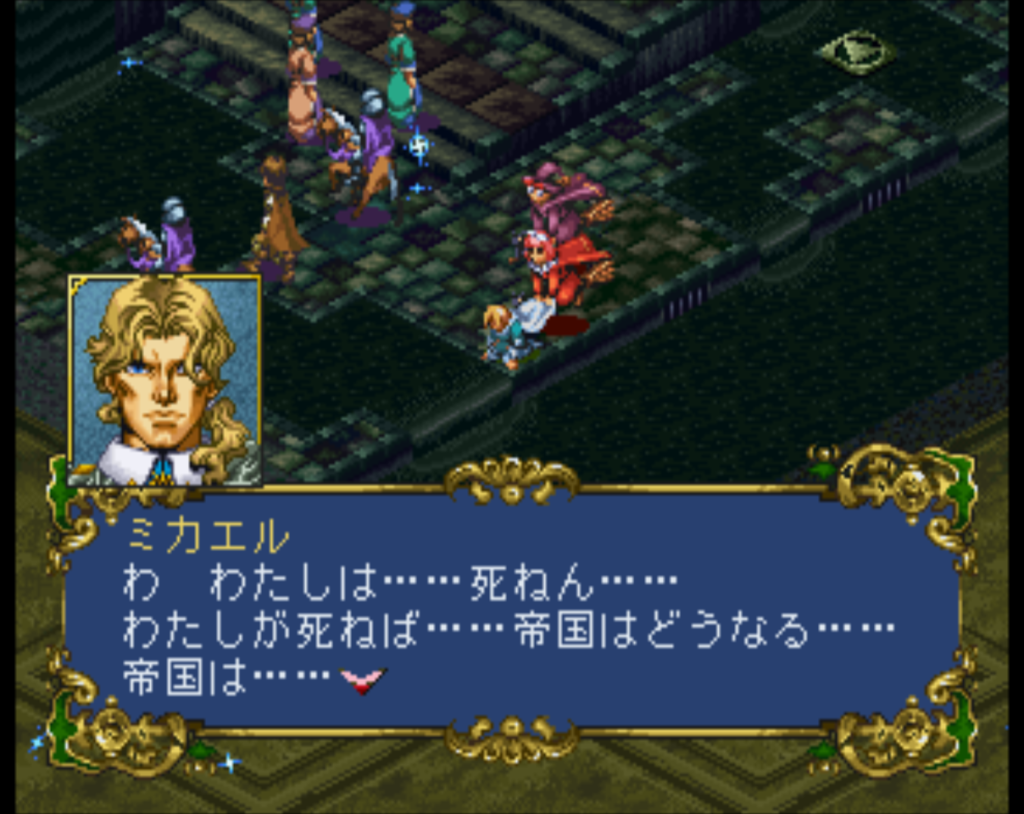
In chapter 8, three things happen all at once: Mikael assassinates the Emperor and tries to take power, at the same time one of the vassal states (Aroma) has its leader want to take over the Empire, and Bofon is attacking again. You can do these three in any order but it just changes the order of the battles, there’s no effect on the story or stage themselves.
It turns out that Darma, one of the people in the Mais council, has participated in this rebellion supposedly in return for control of Mais. As far as I can tell, this is a fixed event, but it makes me wonder if in the planning stages, the designers intended for this section to be influenced by the state councils and who got mad during them. That would have been quite complicated to implement, though.
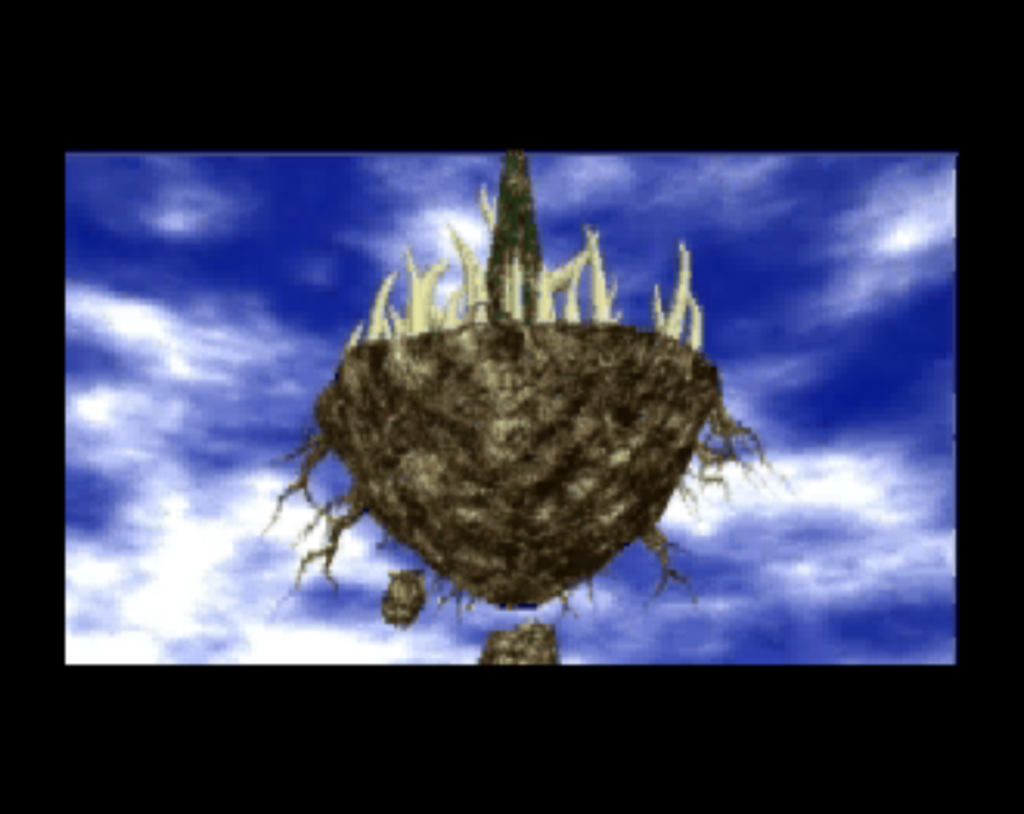
I went for Bofon first. One of the 4 generals, Ridis, tells us that her master is pissed off because humans stole the gods’ names to develop their civilization, but we don’t learn anything more than that. As usual, most of the stages can be beaten with the witches.
In Aroma, King Julian wants to use this floating island to take over the world, but we’re able to crash it and kill him. Finally, we have to deal with Mikael back at the capital, continually chasing him out of the capital and through the area until we finally catch up with him. Most of these are 1-2 turn witch stages but one of them is harder, you have to make your way up a few tiers dealing with archers and catapults until you can finally send the witches up. One refinement I made to the strategy is that you should usually move at least one witch directly next to the boss if you can. Typically the boss will first switch formations, then block if you are out of range. Often all this blocking will leave the boss with two-digit HP after all the spells, but if you move next to them they’ll attack instead of blocking, and they can be taken down.
Once everything is taken care of, Alexis becomes the new Emperor, and we prepare to deal with Bofon once and for all.
In Chapter 9, that Monica follower from before stabs Dine and kills her, sending her to a spirit realm of sorts.
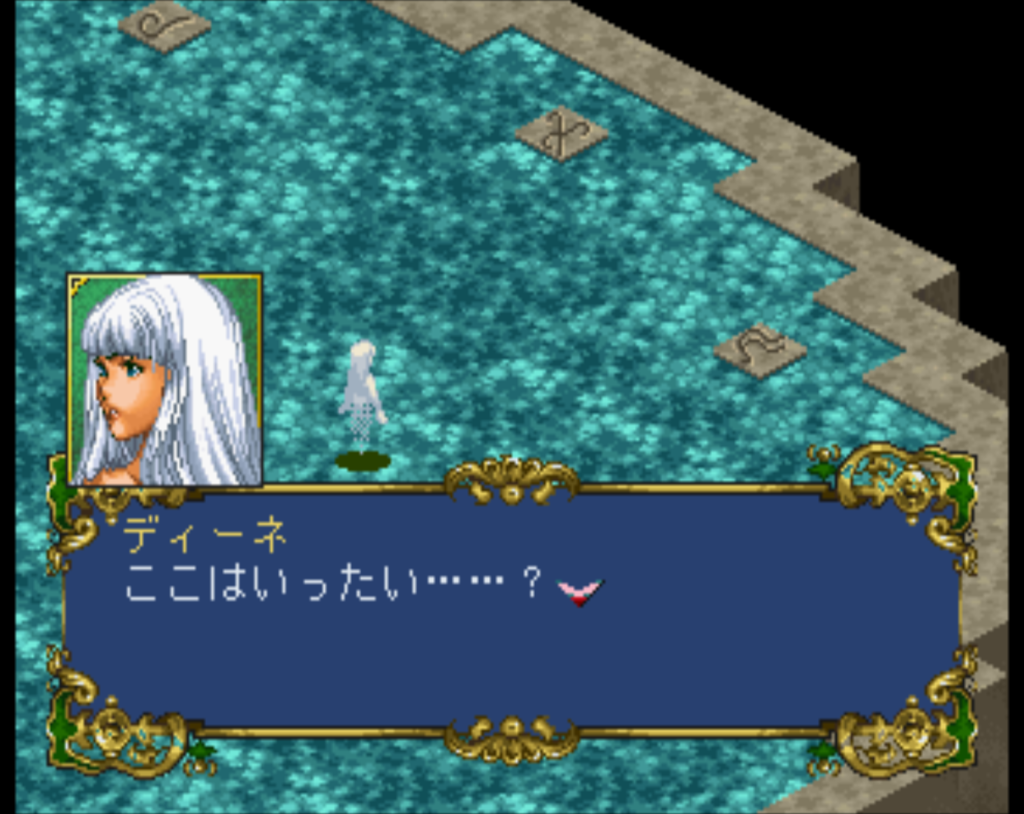
There’s no battle here, but Dine learns about all the gods who had their names stolen from them by the humans and who are now reduced to near impotency. Mais was one of the main people who did this. The Goddess still loved humanity, but eventually all her names were stolen too and Mais beheaded her. The head was reborn as Dine when Alexis gave her a name, but the torso still exists as the leader of Bofon, working on pure revenge and hatred. It’s now time to see which Name will be stronger; the one Alexis gave, or the name of the sleeping Head. Dine is able to choose to return to the human world again, and we start the final chapter.
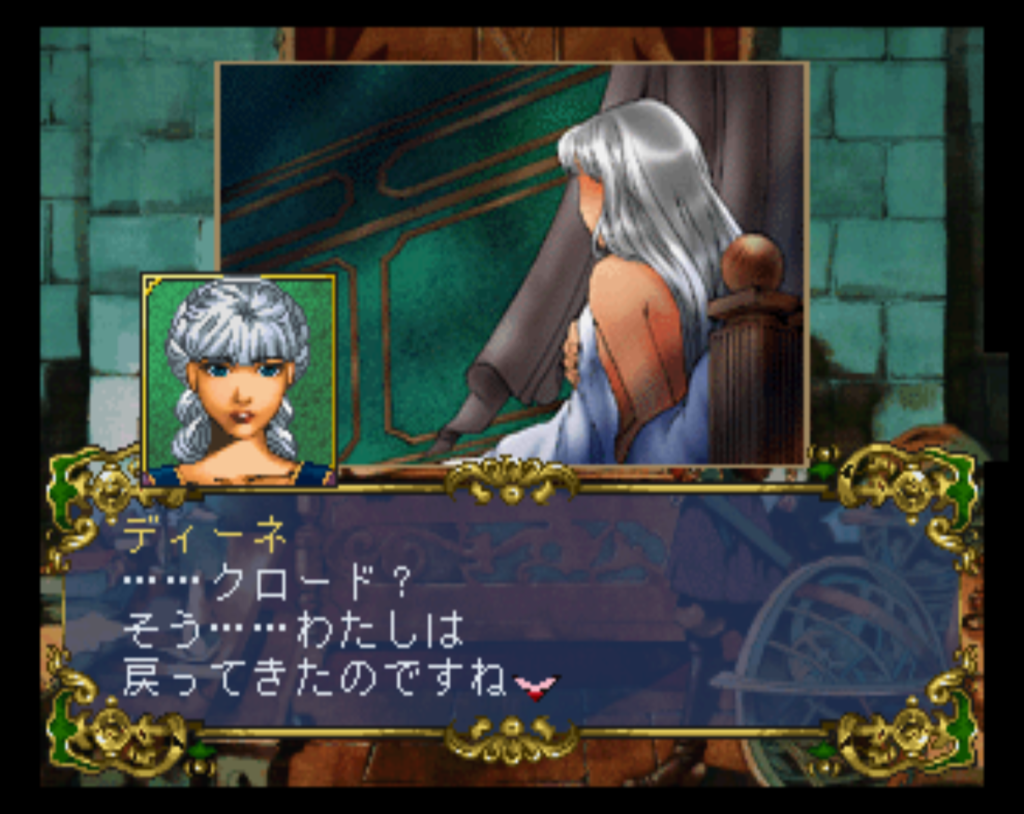
We start off with a messenger from the Bofon telling us that the King of the World will soon awaken, and exact revenge on all humanity for their collective mortal sin, and especially Mais. So we decide to attack Bofon before they can do that. Ridis appears first, and when we beat her up she tells us to go to Jurubal to learn why they hate Mais so much.
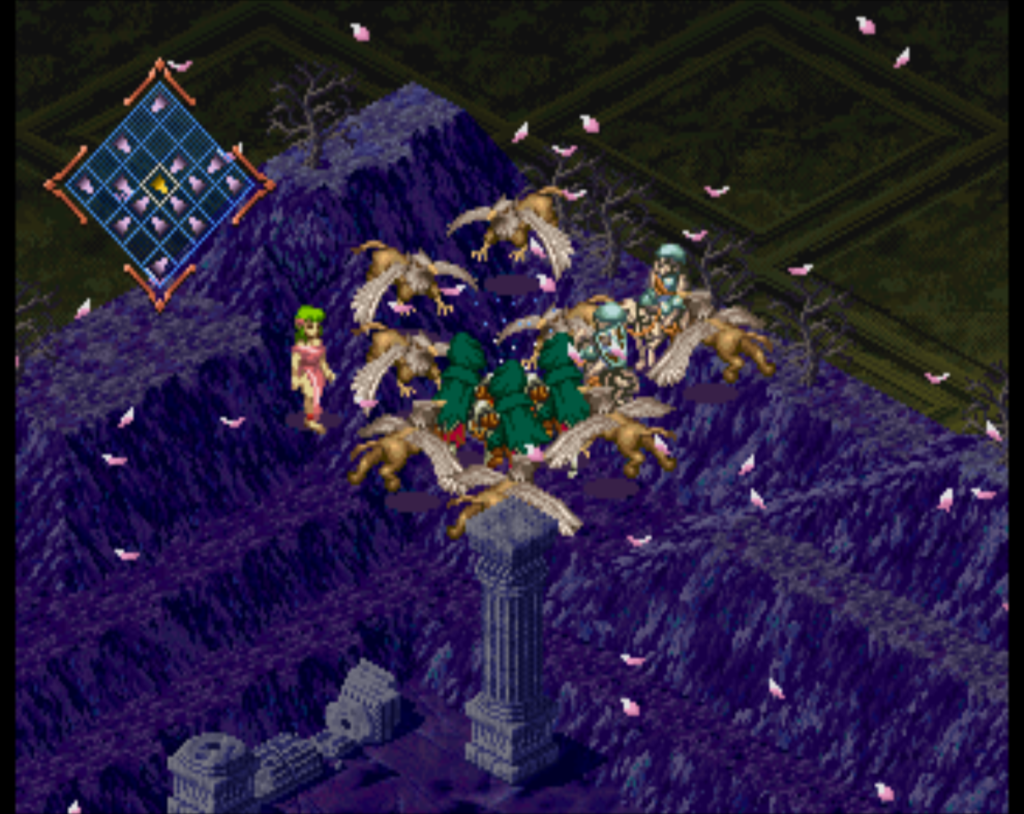
This is a weird stage, with a flower that has to move to the center of the map. But all the enemies surround it and take their turns beating it up (it immediately revives if killed). The enemy turns take forever, but eventually you can clear out enough of the enemies that it will make it to the center. Dine then gets the Sword of Mais, and we learn that Mais stole the flower crown of the goddess to make the sword — when the gods have all their names stolen, they turn to stone and enter an endless sleep of nightmares.
Next up is Zaitan, finally back from the beginning scene. He endlessly revives, but we’re able to stop this from happening by placing various people on runes (this game also has a bunch of stuff with “rune words” that can do powerful things).
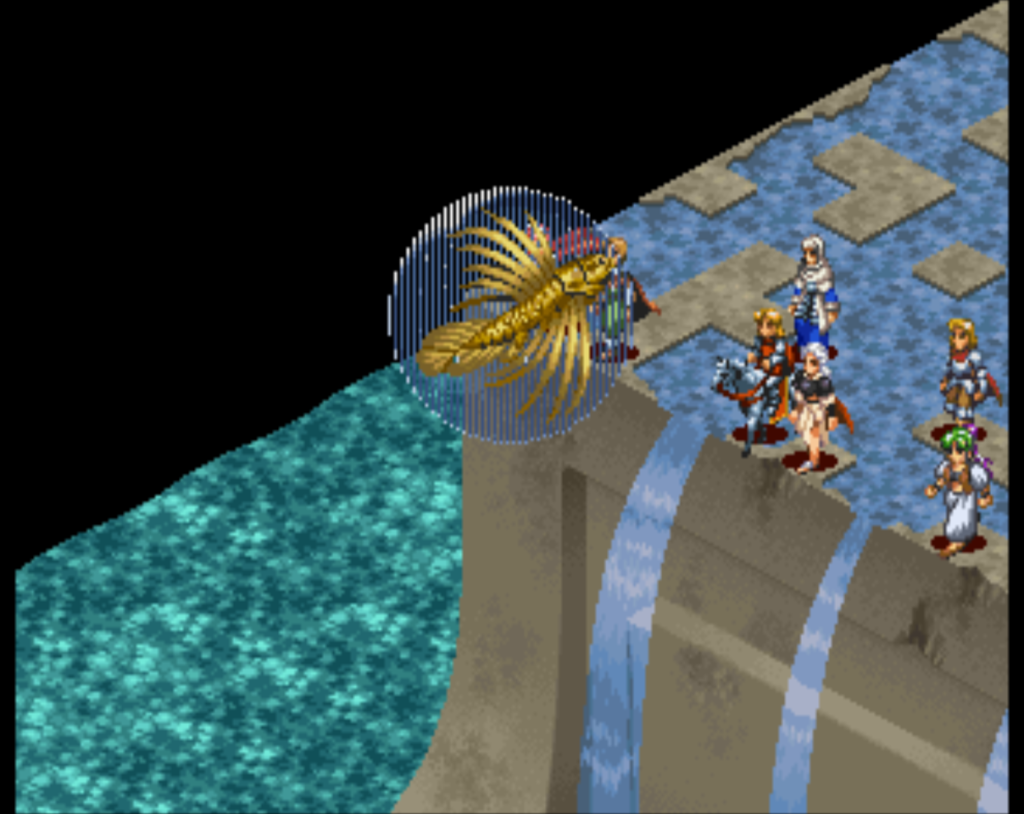
Next we find a big fish who teaches us the Forgotten Rune Word, which will help save the world. Now we need to head back to Mais, because the Bofon have destroyed it — the four generals are actually creations of the sleeping goddess to replace her stolen head.
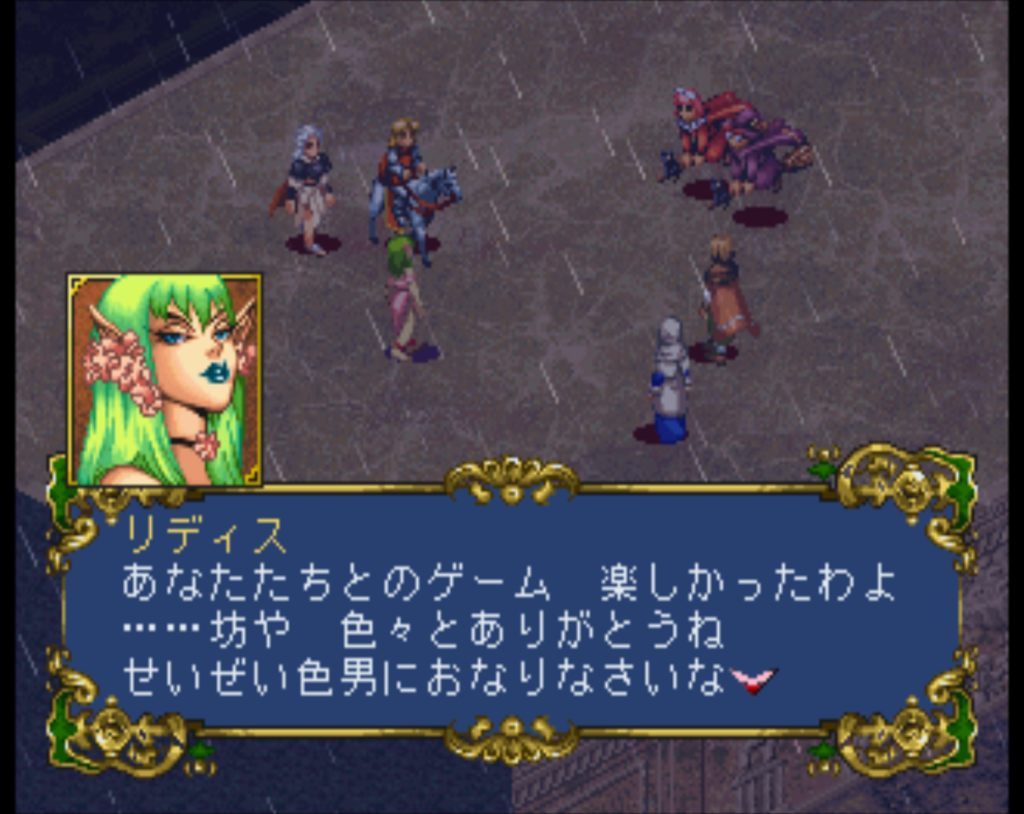
Ridis goes down next, and then finally Evil Shade and Dark Child (the other two). These are all 1-2 turn clears. We learn that the nameless god will soon awaken and take names from our world.
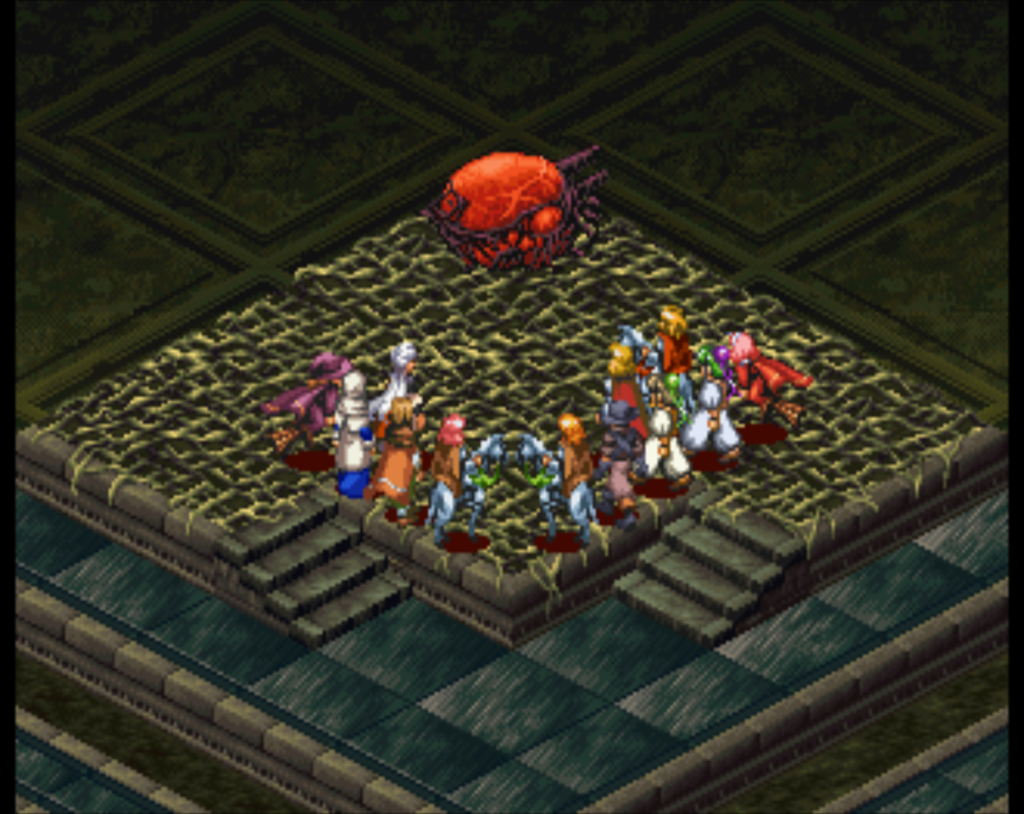
Finally we reach the coffin where the final showdown will occur between the two parts of the nameless goddess (Dine and the enemy).
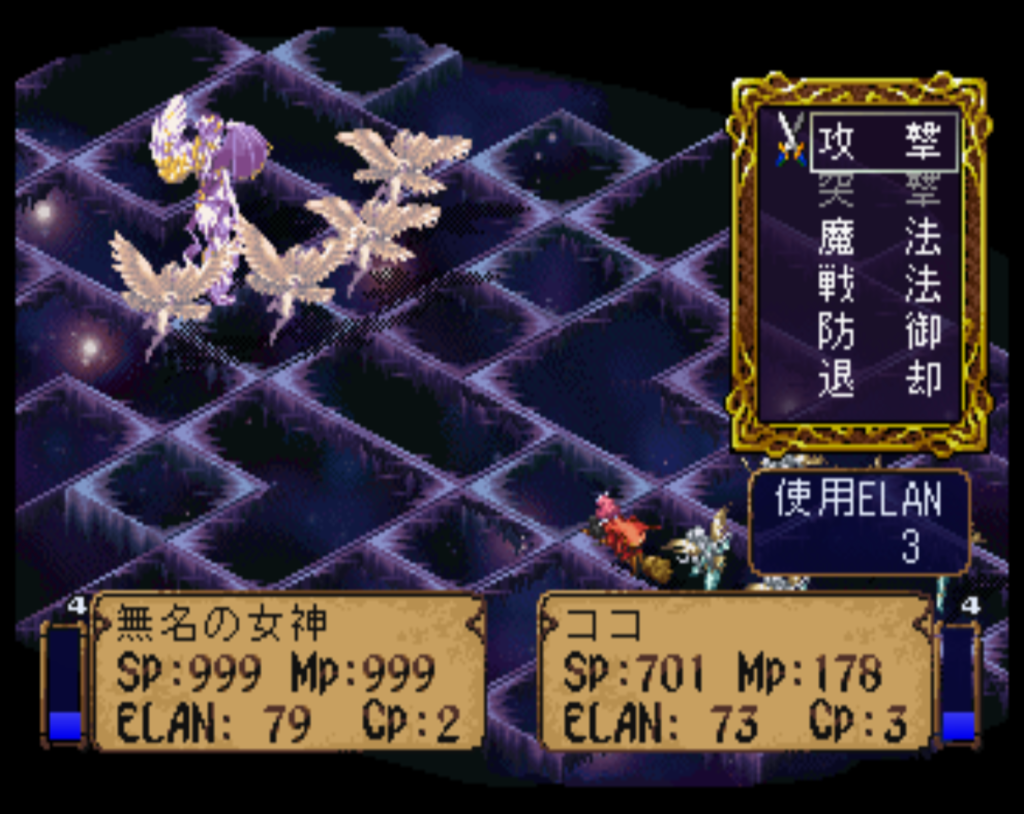
The nameless goddess is a tough opponent; she has extremely high defense and 7 actions a turn. I lost 4 or 5 units but eventually took her down. You actually have to equip the Mais sword on Dine and have her take the final action to win.
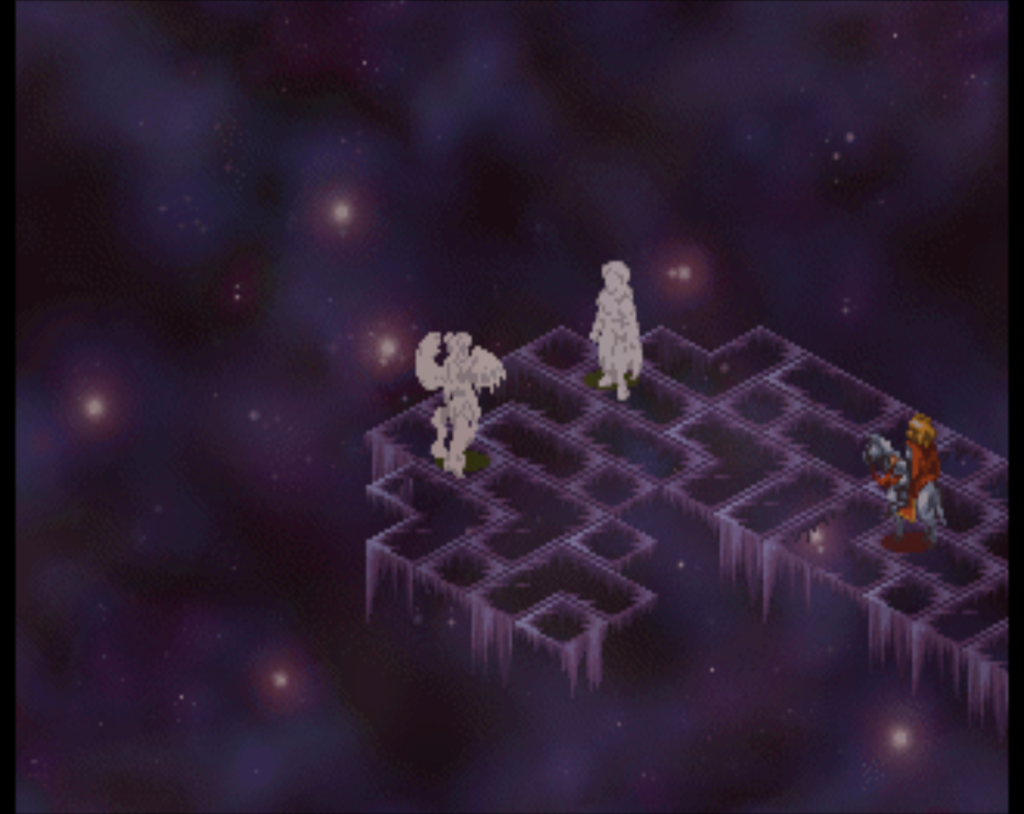
I was a little unclear on the ending — the basic idea is that through this fight, the human name was stronger than the name given to her in her nightmares, so the world would not be destroyed. But Dine says something about going through spacetime to grant two names to the goddess and I wasn’t sure what that meant.
In any case, you see what everyone does afterwards, and then after the credits there’s a brief scene telling you what happened to Alexis. This depends on the choices made during the conversation scenes as well as who survived the final battle — I didn’t realize that made a difference so I did not get the best “God Emperor” ending.
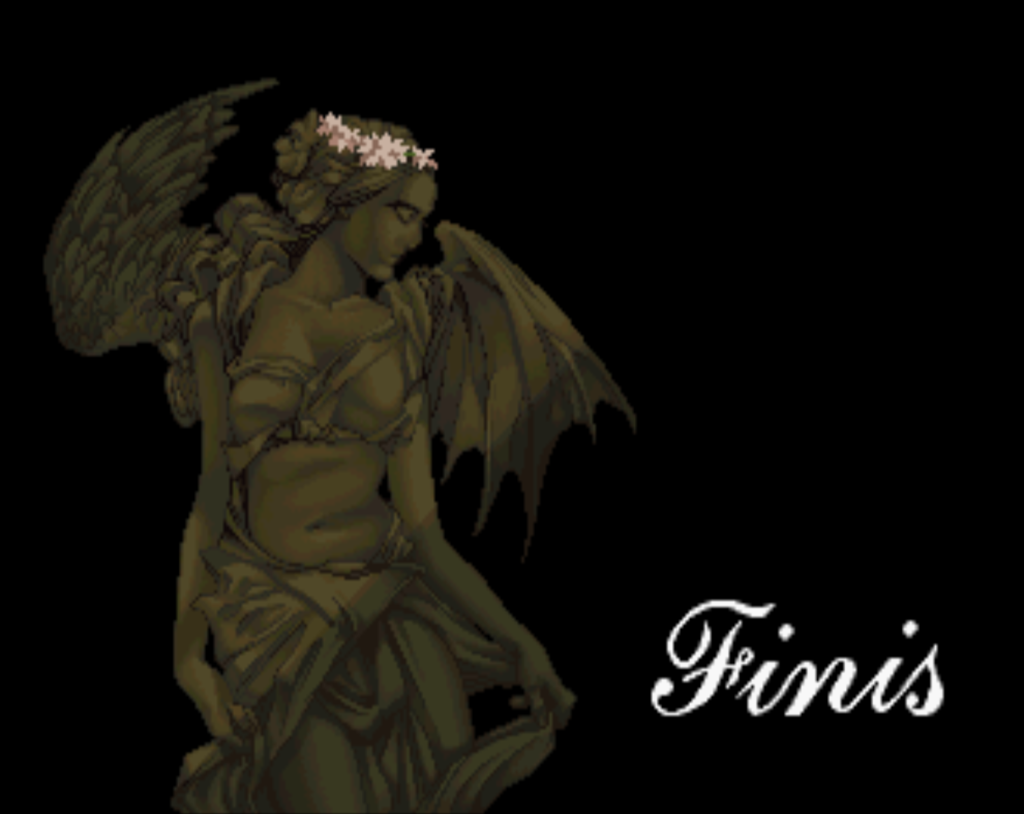
Ultimately this game has a lot of strengths — the story is interesting, the graphics have good style, and the system has a lot of depth. But the game never really drew me in the way that other top SRPGs have. And I think that is down to one reason: the pace of the battles is way too slow. When I first started the game I was able to watch NCAA basketball games during the battles which helped, but the tournament ended before I finished the game. In the later stages, even though I was winning in 2 or 3 turns with the witches, it still felt tedious. If you are playing on a console this is compounded by not being able to save in battles, not even a temporary “suspend save” like some games have.
So that’s 1996. Sometime mid-week I will post the wrap-up with game of the year, and a 1997 preview. Next game will be Sangokushi Koumeiden for the PSX.
This game looks really cool. english translation never though.
The more screenshots you posted, the more interesting this game looks. The Saturn had a lot of very interesting SRPGs that unfortunately never got English translations: Langrisser 3, 4, 5 (at least 4 has the PSX patch), Terra Phantastica, Funky Fantasy, Wachenroder, Sakura Wars 2, and until recently, Valhollian.
1997 looks like it might have some good ones. Slayers Royal, Sparkling Feather, Feda 2, Front Mission 2, and Angel Blade, which was Nippon Ichi’s first SRPG. That one in particular has me curious. Aside from this, seems like it has a lotta more obscure JP-exclusives. I know Langrisser 4 is a great game (good candidate for GOTY probably), but aside from this, hopefully your blog can help fill me in on some of those gaps.
For a minute I thought that Wachenroder wasn’t on my list, but eventually I found out that I had just done an arbitrary transliteration of the katakana and had it on as Bakken Loader.
Everyone tells me I should play the Playstation version of Langrisser 4.
The battle system between PS and SAT are completely different. PS uses the L5 battle system which drastically changes the gameplay. I recommend playing the SAT version for comparison’s sake.
I bought this many years ago and always hoped it was a hidden gem. Some of the art is really cool and I love the genre. I’m a little disappointed to learn it’s not some amazing, unlocalized Sega game (turns out they didn’t even make it). Thanks for the writeup. Now I will misguidedly place all of my hopes on Wachenroder.
I think for some people it would be — there really is a lot to like about this game, I just found the pace too slow. But others might not mind that.